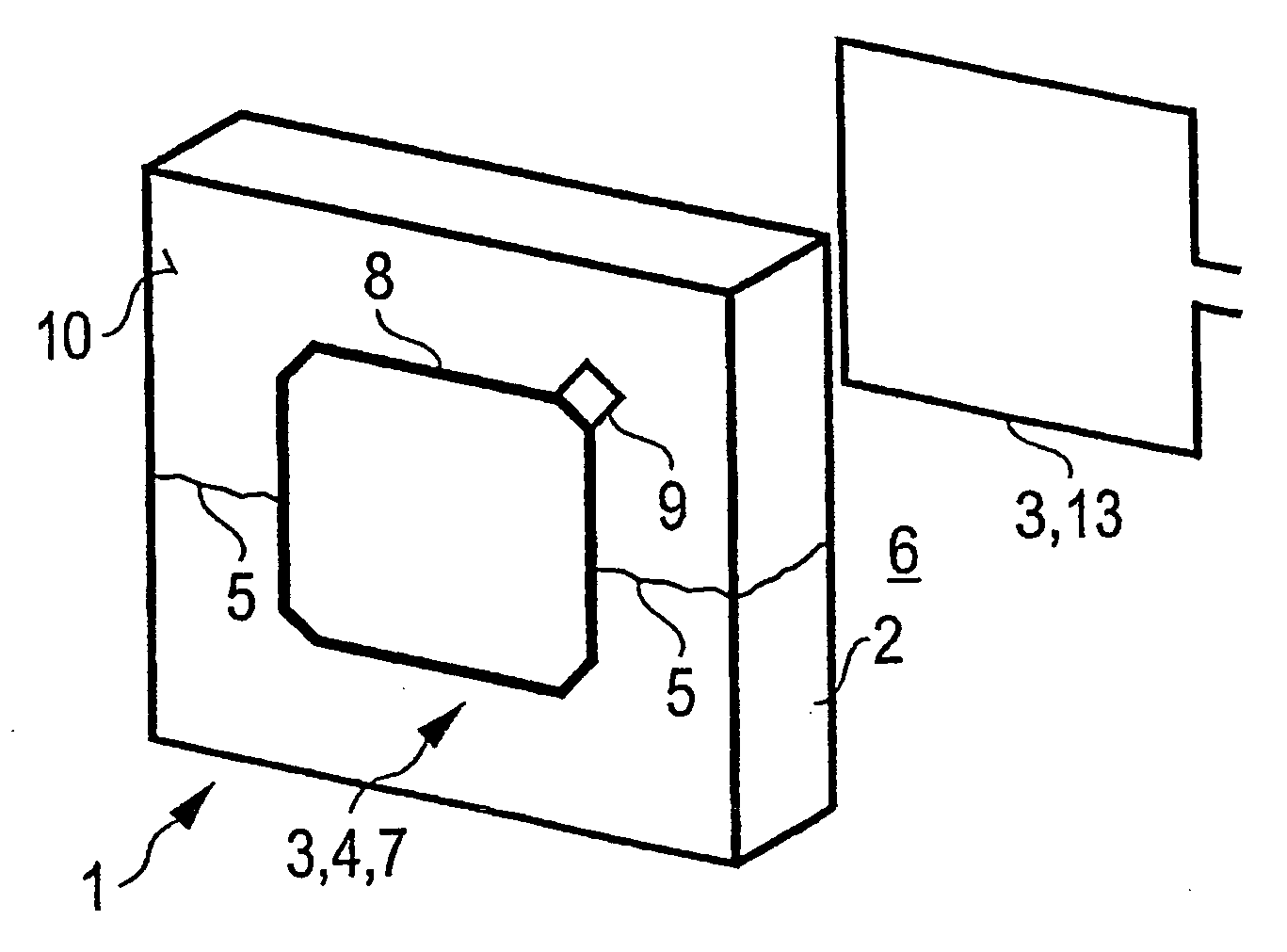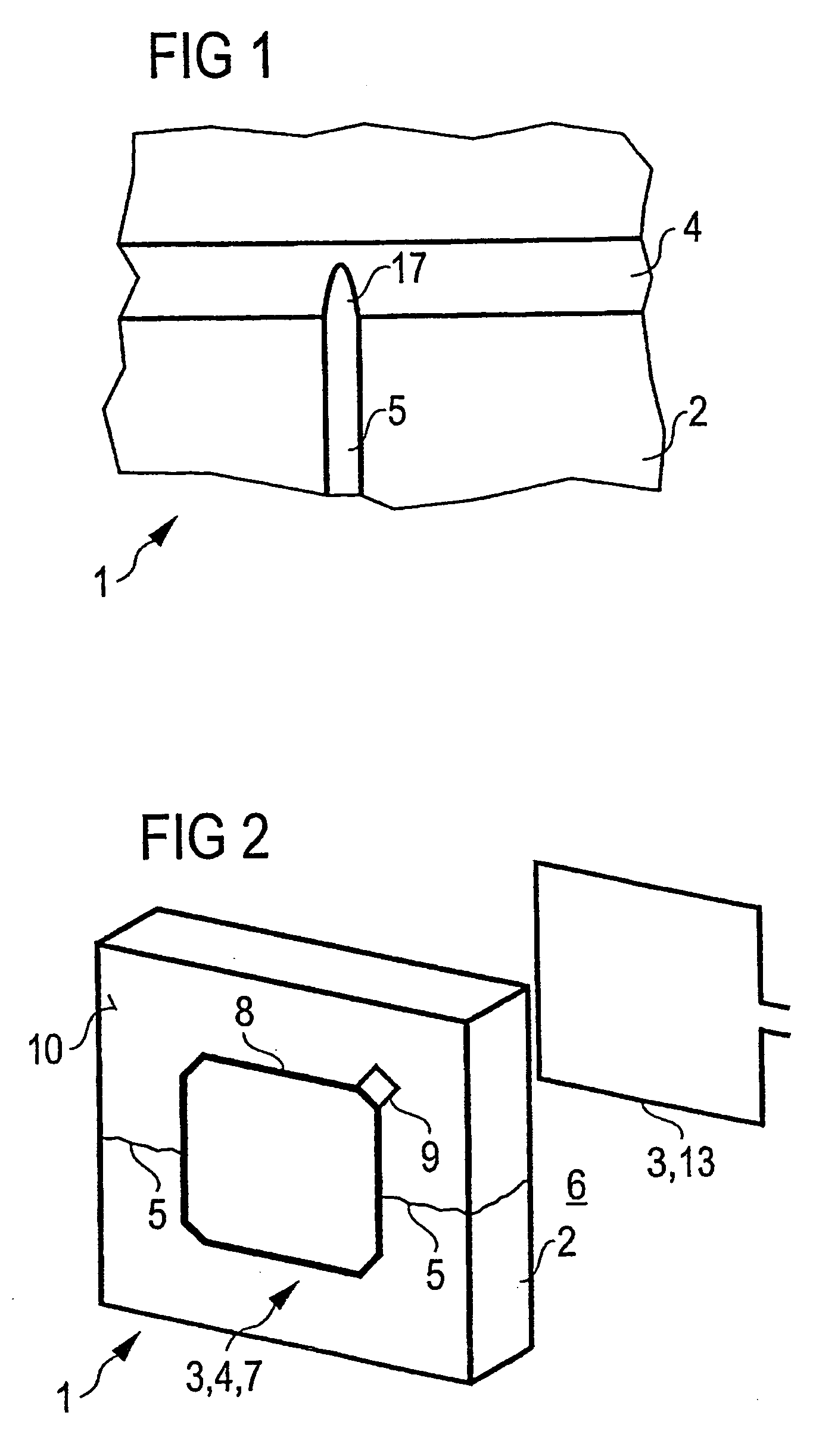Device for detecting degradation of a component
a technology for detecting components and components, applied in the direction of resistance/reactance/impedence, instruments, mechanical means, etc., can solve the problems of no permanent electrical connection or permanent electromagnetic coupling, and achieve the effect of simple, fast and reliable recording
- Summary
- Abstract
- Description
- Claims
- Application Information
AI Technical Summary
Benefits of technology
Problems solved by technology
Method used
Image
Examples
example 1
[0045]The arrangement 1 comprises a component 2 in the form of a heat shield and a monitoring device 3 for recording degradation 5 of the component 1 (FIG. 2). The monitoring device 3 has an electrically conductive monitoring structure 4 with a defined electrical property applied to a surface portion 10 of the heat shield 1. The monitoring device 3 and the monitoring structure 4 are not permanently electrically connected to one another.
[0046]The surface portion 10 is, for example, remote from the interior space 6 of a combustion chamber. The monitoring structure is a resonant circuit 7 comprising an interconnect 8 and a capacitor 9. The degradation 5 that is to be recorded is a propagation of an existing crack.
[0047]The heat shield 2 includes a ceramic as component material. The ceramic is mullite. The conductor material of the monitoring structure 4 is an electrically conductive ceramic conductor which is able to withstand temperatures of up to 800° C. The conductor material and th...
example 2
[0053]Unlike in the arrangement described above, the monitoring structure 4 comprises a network of internal interconnects 14 and external interconnects 14. Each of the interconnects 14 and 15 is distinguished by a defined DC resistance. At those locations of the heat shield 2 which are not influenced by cracks 5, the interconnects 14 and 15, as electrical contact locations 16 for determining the electrical property of the monitoring structure, are routed as far as the edge of the heat shield 2. The internal interconnects 14 are not normally influenced by cracks 5. They are used to check the contact locations 16 during the determination of the DC resistance of the monitoring structure. For this purpose, the internal interconnects 14 have a different electrical resistance than the external interconnects 15.
[0054]The monitoring device 3 and the monitoring structure 4 are not permanently electrically connected to one another. An electrical connection (coupling) between monitoring device...
example 3
[0056]The arrangement described above is used to record degradation of the heat shield not by measuring the DC resistance of the monitoring structure 4, but rather by measuring the frequency-dependent impedance of the monitoring structure.
PUM
| Property | Measurement | Unit |
|---|---|---|
| temperature | aaaaa | aaaaa |
| surface temperature | aaaaa | aaaaa |
| temperatures | aaaaa | aaaaa |
Abstract
Description
Claims
Application Information
 Login to View More
Login to View More - R&D
- Intellectual Property
- Life Sciences
- Materials
- Tech Scout
- Unparalleled Data Quality
- Higher Quality Content
- 60% Fewer Hallucinations
Browse by: Latest US Patents, China's latest patents, Technical Efficacy Thesaurus, Application Domain, Technology Topic, Popular Technical Reports.
© 2025 PatSnap. All rights reserved.Legal|Privacy policy|Modern Slavery Act Transparency Statement|Sitemap|About US| Contact US: help@patsnap.com



